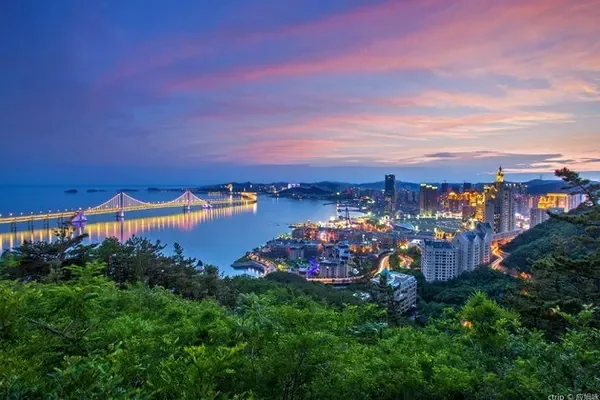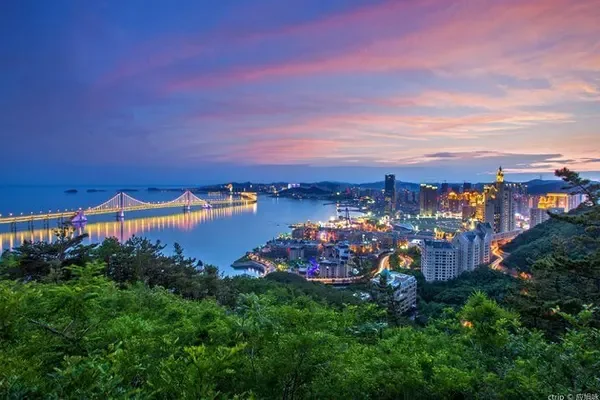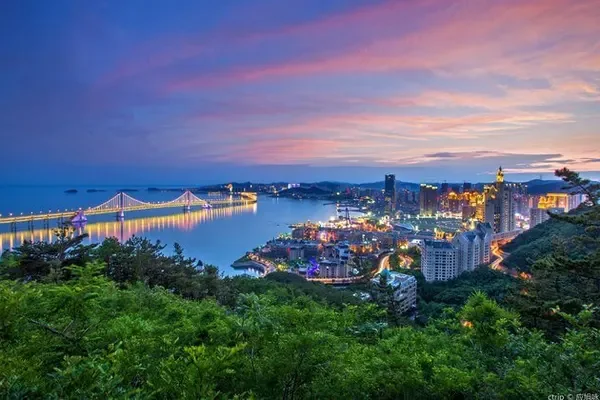2021 Grand Tour Day1~2(5/27~5/28): Luoyang Lijing Gate, Hanhanguguan Ruins, Weihan Ancient Road Shihao Section Ruins, Ruicheng Guangrenwang Temple, Ruicheng Yongle Palace
The epidemic has accumulated a lot of holidays, so I decided to ask for a month's leave. I drove to the Northwest Great Ring Road and the Silk Road with my girlfriend, and went to Eboliang and Mangya, Haixi Prefecture along National Highway 315. I couldn't book hotels in these two places before the end of April, and I was a little nervous because of the online strategy. So two months before departure, I started planning what to bring. Eating and drinking are given priority, self-heating food, instant noodles, Red Bull, drinking water, coffee, etc. are prepared first. Disposable towels, disposable socks, disposable underwear, outdoor shoes, paper towels, sleeping bags, tents, etc., piled up the entire back seat.
Dozens of guides have been prepared before the trip, including the driving route on Baidu Maps, attractions and introductions along the way, for fear of missing any places. Wusute Shuishang Yadan and Mangya are more worried about not being able to book a room, so book the Shuishang Yadan RV camp and Mangya Westport Hotel early. Although the entire itinerary is tight, when we arrive in Dunhuang, we don't plan to hurry and drive wherever we live every day.
Depart from Nanjing at noon, first drive to Luoyang for one night, and then go to Luoyang at night to see the night view. I saw a very spectacular night view photo of the city gate on the Internet before, and thought it was the Lijing Gate. On the way to Lijing Gate, I did see the magnificent city gate from a distance, but when I arrived at Lijing Gate, I saw it in person. thing. Go back to the hotel to study the map, and then compare various photos. It turns out that the magnificent city gate is Yingtianmen, not far from Lijingmen, and Mingtang Square is behind Yingtianmen. If you want to take a picture of the city gate reflection, you should go to Dingding Gate. As the eastern starting point of the "World Cultural Heritage-Silk Road", Dingding Gate is also one of the heritage sites in Luoyang. Others include the ruins of Luoyang City in the Han and Wei Dynasties, the Hanguguan Ruins in Xin'an, and the Shihao Section Ruins of the Weihan Ancient Road. Fortunately, Luoyang is not far away, so let's leave it for later.

Lijing Gate was rebuilt in 2002. There are Tianhou Temple, Nine Dragon Hall, Xianliang Temple, Guanyin Pavilion, Chenghuang Temple and other scenic spots in the city tower. We are not very interested in this kind of antique works. The historical and cultural district of the old city behind is quite lively, and the food and beverages are also cheap.

Still choose National Treasure Primus Hotel in Luoyang. I passed by Luoyang and stayed here a year and a half ago. I think the design and service of the hotel are very good. Since then, I don’t want to stay in Luoyang again. This time I stayed, I didn't expect that the room I was given was the same as a year and a half ago. It was also a coincidence that when I opened the door, I was greeted by the fragrance of books (the bookstore in the hotel).












On the second day, first go to the Hanguguan Ruins in Xin'an Han, 34 kilometers, 50 minutes. There are three Hangu Passes, and the Weiguan site has been submerged by the Sanmenxia Reservoir. Now the Lingbao Hanguguan Scenic Spot in Sanmenxia City is where Qinguan is located. This is also the place where Lao Tzu wrote the Tao Te Ching, but it is a restored scenic spot. I have been there before and it feels pretty good.

Han Hangu Pass was suggested by Yang Pu, general of building and boats from Xin’an during Emperor Wu of the Han Dynasty, to move to the east. According to the "Hanshu", Emperor Wudi Yuanding three years (114 BC) "moved Hangu to Xin'an". more than one hundred years. Ying Shao's note in the Eastern Han Dynasty: "At that time, the general of the Louchuan, Yang Pu, had made great achievements. He was ashamed to be an outsider of the Guandong. He wrote a letter to beg and emigrate to the Guandong, and used his family property to pay for it. Emperor Wu was very generous, so he moved to Xin'an and went to Hongnong for three hundred miles." So Xin'an changed from "Kandong" to "Guanzhong". Tang Dynasty poet Wang Changling's famous poem "Qinshimingyuehanhanshiguan" refers to Xin'an Hanguguan.











There are not many tourists here, and the ticket is 20 yuan. After crossing the bridge from the entrance of the scenic spot, there is a wall, the so-called "Badou Mountain". Turn left and walk to the gate for about 1 kilometer. Archaeological sites of dikes, drains, bridleways, etc. Turn right after crossing the bridge and turn right is an ancient road. It is not long. The record is 58 meters. The ruts are clear. There are stone inscriptions on the rock wall at the end. The year names of Wang, Zhao and Tang Gaozong are Shangyuan. ".





Then go to the ruins of the Shihao section of the Weihan Ancient Road, and take the high speed for about 1 hour and 10 minutes, 72 kilometers. The parking lot is large and the visitor center is not functioning, of course it is free. After climbing up for a while, I still can't figure out which road is the Xiaohan Ancient Road. Going back to the visitor center to find the bathroom, there are guards and it is not open. I asked about the specific location of the Weihan Ancient Road, only to realize that I hadn’t climbed in place yet, so I turned around and climbed again, and saw a locked iron gate. It is said that the outside is Weihan Letter to the ancient road. I took a few photos with a drone, but I was still skeptical.





Next, go to Guangrenwang Temple and Yongle Palace in Ruicheng, Shanxi, which are the most anticipated today. It is about 100 kilometers from the Shihao section of the Weihan Ancient Road to the Guangrenwang Temple, and it takes one and a half hours. Guangren Wang Temple is one of the three existing "wooden buildings" with complete beam structure in Tang Dynasty in China. Nunnery), and Guangrenwang Temple is the only Taoist building. Guangrenwang Temple is commonly known as Wulong Temple, and Guangrenwang is actually Qinglong God, one of the dragon kings.






Although there is a ticket office in Guangren Wang Temple, there is no need to buy a ticket, just register. The eyes are bright when you enter. Although it occupies a small area, the layout is very stylish. After checking the information on the Internet, I found out that Wang Shi and others donated money, and experts from the Department of Architecture of Tsinghua University referred to Liang Sicheng's "Image History of Chinese Architecture" to design and build the protection facilities. Although it is new, it is not vulgar, but this is my personal opinion, different people have different opinions, but compared with some ancient buildings, after the renovation, not only does it lose the ancient flavor, but it is also a bit more tacky, which is always much better. The wall next to it introduced the distribution of ancient buildings in Yuncheng and Linfen one by one. We took pictures of them one by one as a reference for future travel planning.

When I went there, the door of the main hall was not open, so I was unable to enter and visit. It was a pity that I might come to see it again when I have a chance in the future.
Then go to Yongle Palace. The distance between Yongle Palace and Guangrenwang Temple is only 2 kilometers. Go to Guangrenwang Temple first, and then go back to Yongle Palace, because it is expected that Guangrenwang Temple will not take too much time due to its small area, and then go to Yongle Palace to play slowly. up.













Yongle Palace is a Yuan Dynasty building, Quanzhen Taoist Temple, which was originally located by the Yellow River, but because of the construction of the Sanmenxia Reservoir, it was moved northward to the current ancient Wei State ruins, so after entering the scenic spot, you can first see the ancient Wei State city wall ruins. The mural "Chaoyuan Tu" in Yongle Palace is famous far and wide, and it is even more amazing to see it with your own eyes. It is strictly forbidden to take pictures of the murals. I found some pictures on the Internet as evidence.




After looking at the murals of the three main halls, I walked to both sides and found a sign of "Lu Zu Tomb", which I hadn't seen on the Internet before. It turns out that Lu Dongbin was from Yongle Town, Ruicheng, Shanxi Province (Hezhong Mansion, Puzhou, Hedong), and Yongle Palace was rebuilt on the basis of Lu Zu Temple in Song Dynasty. However, it is uncertain whether it is true or not. There seems to be a Luzu Tomb in Handan, Hebei Province (Huangliangmeng Luxian Temple), and many celebrity tombs have this situation. Next to Lu Zu's tomb, there is also a Song tomb that was relocated, which is also very exquisite.






The ticket is 60 yuan, but it is worth it.
It was about 5 o'clock after leaving Yongle Palace, and it was 130 kilometers to Weinan, a 2-hour drive. After crossing the Yellow River and entering the territory of Shaanxi, I saw an ancient city of Tongguan on the hill on the left, which is under construction. Perhaps it should be called a "new" city for customs clearance.





![Yuncheng Yongji Secret Realm [Snow Flower Mountain] can't be hidden! It takes 8 hours to climb to the top, surrounded by mountains and rivers all the way! The beauty is too pure!](https://www.anyonetrip.com/uploads/202302/03/cc199230fef4a35f.webp)
